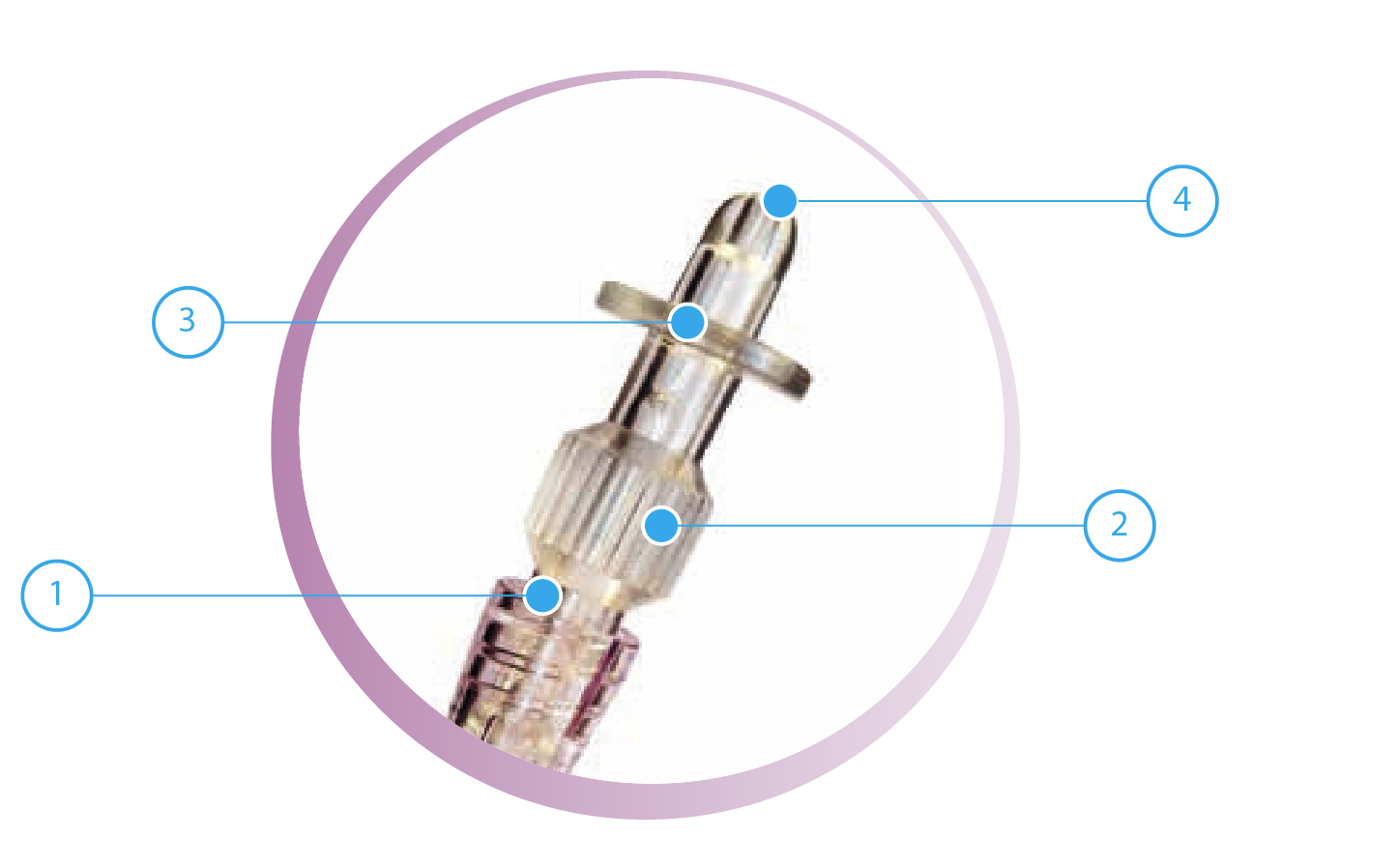How is iAluRil administered?
iAluRil is instilled directly into the bladder either by a catheter, or via the iAluadapter® for catheter-free administration.
Via a catheter
Any residual urine is drained away and iAluRil is passed through the catheter into your bladder. The catheter is then removed, leaving the solution in your bladder.
Via the iAluadapter
You will need to pass urine immediately prior to treatment. The iAluadapter tip is inserted into the urethra and iAluRil is instilled into the bladder through this.
iAluadapter
The iAluadapter is a small tip that attaches to the end of the iAluRil syringe. It allows administration of iAluRil without the need for a catheter so enables treatment to more comfortably continue at home. It comes as standard in each iAluRil box.
- The end part fits securely to the iAluRil pre-filled syringe.
- The ribbed centrepiece provides a secure grip when fitting to the syringe.
- The concave isolating collar is made from a flexible material that adapts to the urethral opening, facilitating instillation without leakage.
- The radiused tip part is the only part of the device to penetrate into the urethral opening. It is shaped to maximise effectiveness and ease of use.
